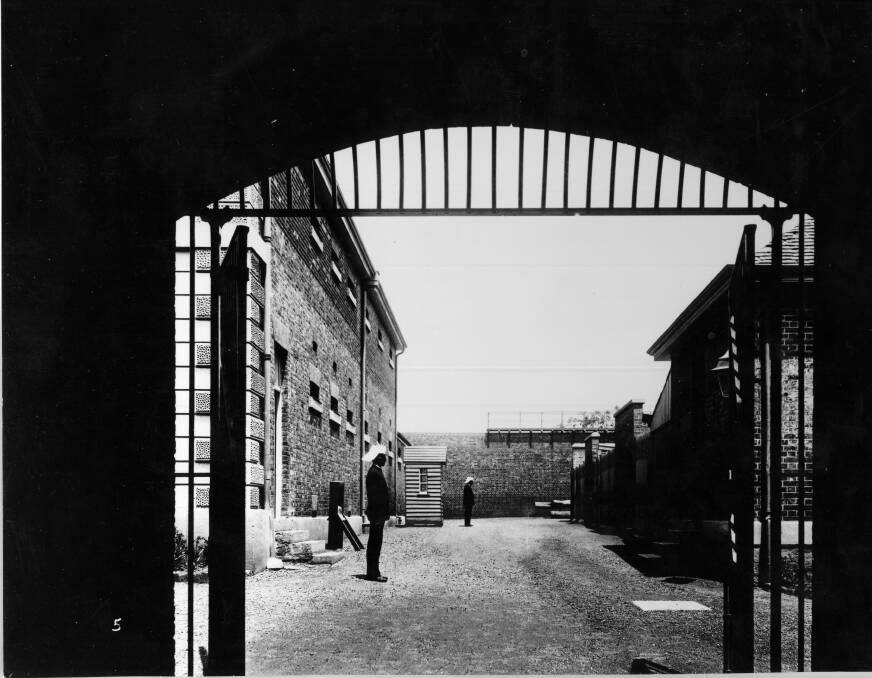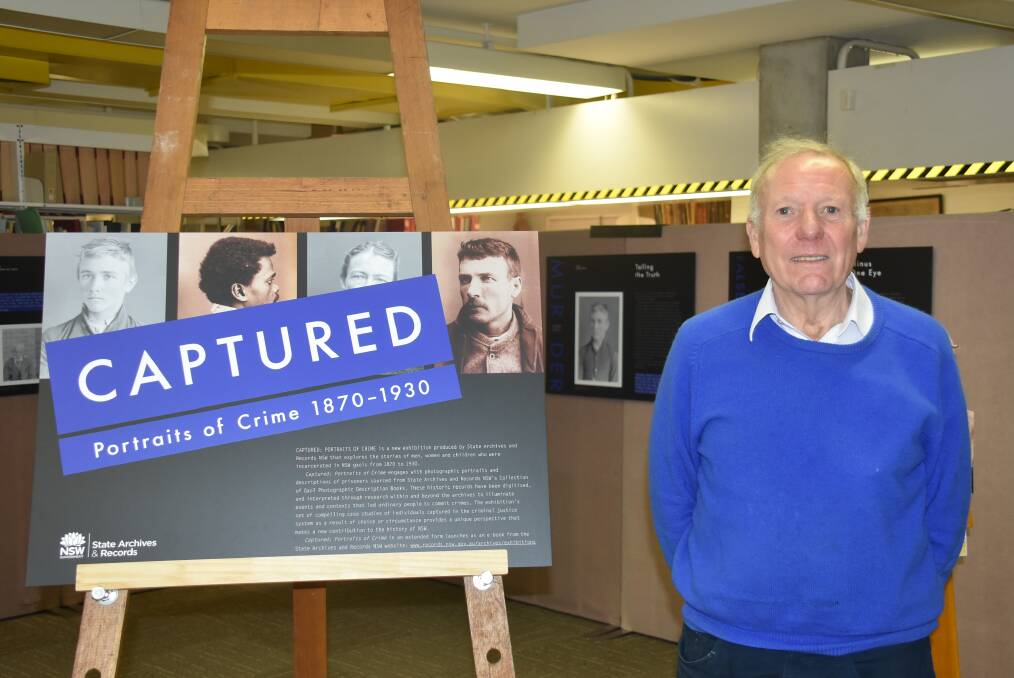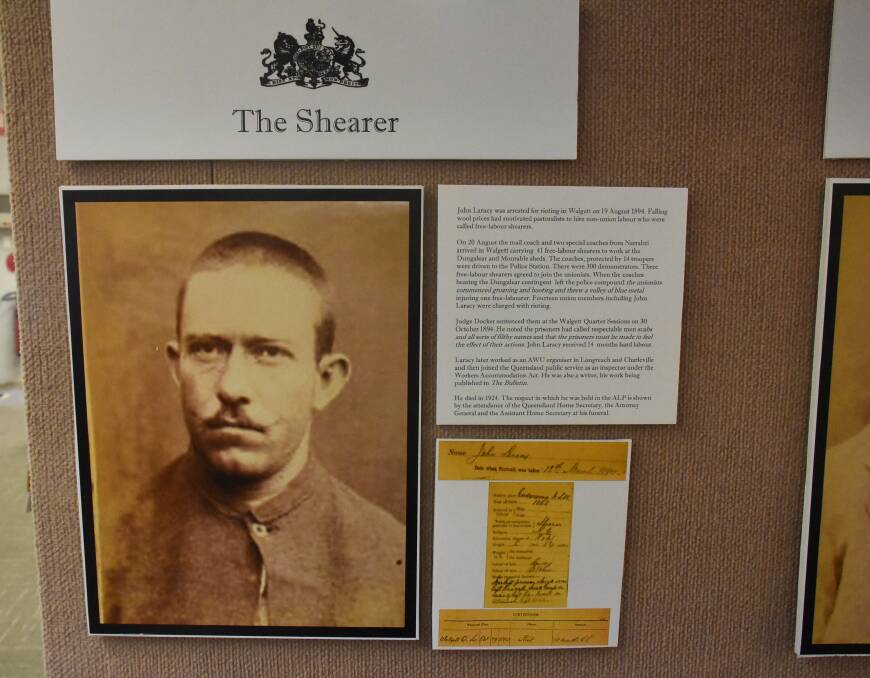
The grim gaol dominated the Armidale skyline from its perch on the hill.
Subscribe now for unlimited access.
or signup to continue reading
The prison, built in 1861, was demolished in 1929 to become the Teachers’ College.
Now, the UNE Heritage Centre, built on the site, is holding prisoners again.
Captured: Portraits of Crime 1870-1930 – State Archives and Records NSW’s touring photo exhibition – explores the stories of men, women, and children incarcerated in NSW gaols.
READ ALSO:
They include con-men, rioters, vagrants, burglars, prostitutes, and the occasional murderer or millionaire.
“Visitors can see a range of people who were sentenced to the jail with very contrasting stories, and read about the background behind their offences,” UNE curator Ian Stephenson said.
“There's always a backstory. What you find in the jail documents is just a very brief snapshot of the name, date of birth, date they were convicted, and offence. Once you start looking at the backstory, they're very interesting, rich accounts, and very different.”

Over six decades, the government photographed some 46,000 prisoners across the state.
Darlinghurst Gaol, Sydney, NSW’s main prison, began photographing prisoners in 1871. Combined with offenders’ personal details, these photos were intended to help suppress crime.
“The quality of the photographs is very striking,” Mr Stephenson said. “Even though they're just small snapshots that go into the prison record, when you blow them up, they're actually full of character.”
Wrongdoers came from around the world. There’s an American widow, sentenced more than 100 times for drunkenness; a New Caledonian or Indian horse thief; an aristocratic swindler; an Irish fortune-teller; and a Jamaica-born pickpocket, “a nice-looking old party … yet a wicked old woman”.
Mr Stephenson and UNE archivist Bill Oates have added a New England component to the exhibition.
“It's a wonderful insight into an historic building that's long disappeared: the Armidale Gaol, that was on the site of the teachers' college,” Mr Stephenson said.
No noose is good noose
William Frederick Ball was the last man to be hanged in Armidale.

Ball, a farm labourer in Pallamallawa, east of Moree, eased his wife’s rheumatism by shooting her, and setting fire to the corpse.
“It does seem a rather extreme remedy,” UNE curator Ian Stephenson said.
“There is some evidence that it wasn’t necessarily a happy marriage, that there were arguments, so it might have been a crime of passion.”
Ball tried to run away to sea. He was about to set sail when the police caught him, and he was brought to Armidale to stand trial.
He was found guilty on April 23 1912, and hanged on June 17.
He was the first man to be hanged in Armidale Gaol for 20 years, and the first in the state for three years.
“He made no statement,” the Barrier Miner (June 18 1912) recorded. “He walked firmly to the scaffold, and death was instantaneous.
“The man's face was pallid,” the Barrier Miner (June 18 1912) recorded; “but his features were firm and set, showing no sign of emotion. He firmly strode up the steps to the scaffold, where he was placed in position quickly. Asked if he cared to say anything, he simply said, ‘No.’ The white cap and the rope were adjusted and the bolt was drawn. The body drew taut, the only noticeable movements being slight twitches of the legs.”

Armidale’s “unladylike” Lucy Clutterbuck, born in 1881, was sentenced many times between 1904 and 1928 for prostitution, vagrancy, drunkenness, and assault.
Deemed “slightly insane”, she was committed to the Bloomfield Mental Hospital, Orange, where she died in 1942.
She was the victim of a difficult childhood. Her father horsewhipped her for picking a neighbour’s flowers, and failed to send her to school.
Hers is a tragic story. So, too, is that of Margaret Higgins, a Maitland servant who killed the one-month-old grandchild born to her unmarried daughter in 1905.
Respectability, though, is not a bar to crime. Walcha town clerk John Maule Hill “bore the highest character for honesty, integrity” – and embezzled £214.
Armidale clerk of works Henry Edward Jackson indecently assaulted a woman in Central Park in 1920.
Some were mixed up in crime at an early age. A 16-year-old Dubbo apprentice was tried for shooting his master’s wife; an 18-year-old labourer burgled a Uralla hairdressing salon; and a couple of Hillgrove lads blew up an outhouse.
Other cases show the racial tensions in the young colony. Ah Gee, a Chinese miner from Tingha, was imprisoned for loitering with intent. He seems to have been victimized by the local people, despite the intervention of the Minister of Justice.

Peter Sadeek, a Punjabi cook on a sheep station near Broken Hill, was hanged for murdering a local woman in a fit of jealousy. His trial became a local flashpoint for race debates there, then one of the most culturally diverse places in NSW.
And two Indigenous trackers from Queensland evaded the police for three years after spearing a Pole.
Other crimes are simply beastly – like an Armidale hotel servant sentenced to 4 months’ gaol for “scandalous conduct with two dogs”.
Other stories have a happier ending. James Dwyer was the first Australian to become a millionaire from writing – but tried to make his first fortune by defrauding the postal department.
Shearer John Lacey was given 14 months’ hard labour for rioting against blacklegs. He became a prominent figure in the ALP, and the Queensland Home Secretary, the Attorney General, and the Assistant Home Secretary attended his funeral.
He had the courage of his conviction.

Captured: Portraits of Crime 1870-1930 runs at the UNE Heritage Centre, Old Teachers’ College, until October 27, Monday to Friday 9am to 5pm; entry free.


